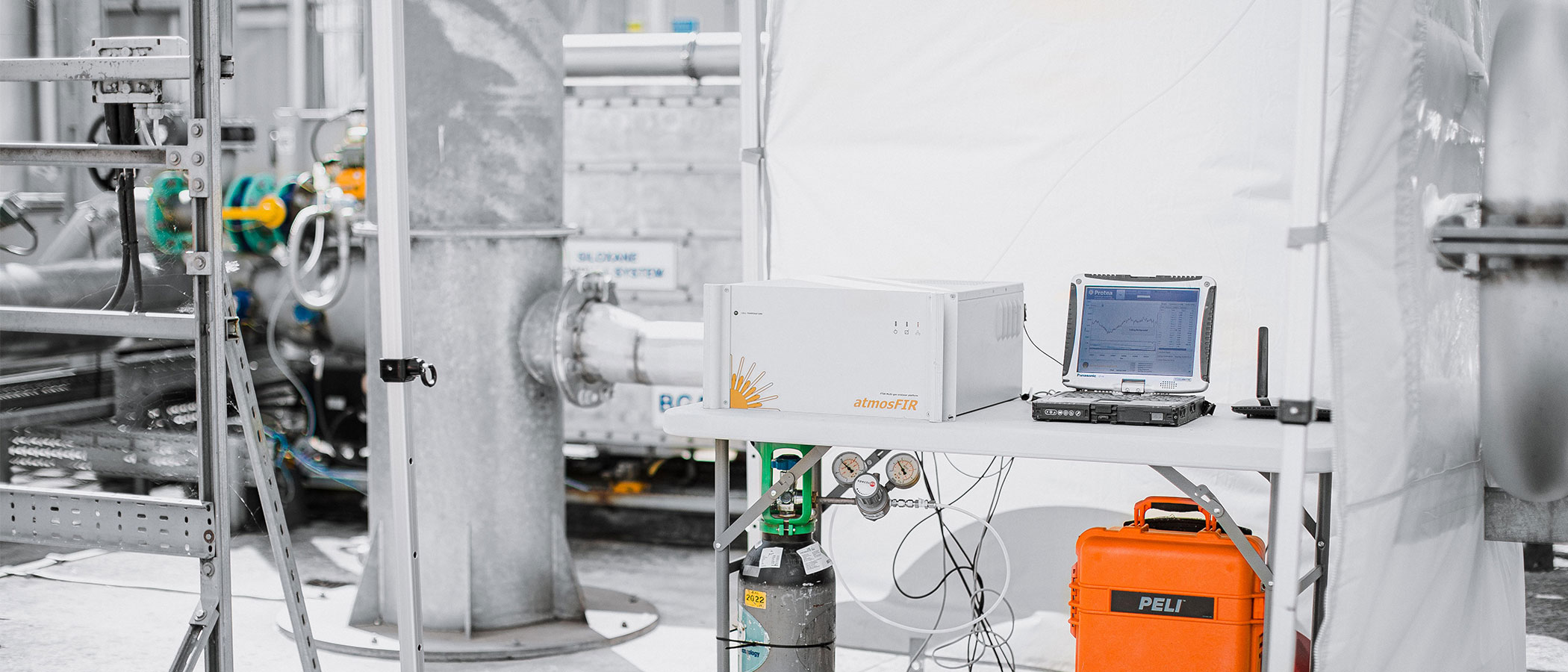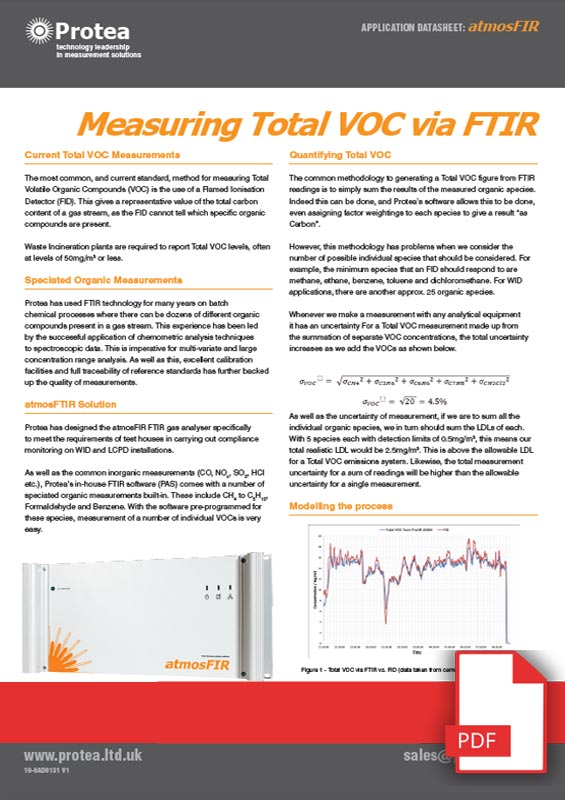Portable Stack Emissions Testing
Protea have been at the forefront of portable FTIR multigas emissions analysers for 20 years. Protea was the first company in the UK to use FTIR for accredited emissions testing and our range of portable emissions analysers has been developed to meet the requirements of stack testing professionals around the world.
QAL2 EN 14181
BS EN 14181 is a quality assurance standard relevant to plants operating under the Large Combustion Plant (LCPD) and Waste Incineration (WID) Directives. Quality Assurance Level 2 (QAL2) of this standard involves the parallel testing of the plant automated measurement systems (AMS) against a certified test house, making measurements with a comparative standard.
Both WID and LCPD plants require the emissions testing of inorganic combustion products such as CO, NOx and SO2. A further requirement of WID plants is often the requirement to measure gaseous HCl. By far the best instrumental technique to use to measure HCl together with the full WID gas suite is FTIR.
Protea’s portable FTIR analysers have been specifically designed to meet the requirements of UKAS accredited test houses in providing parallel measurement data to calibrate plant AMS. Our fully transportable CEM system and software allows testing to be done to ASTM, US EPA, UK EA TGN and CEN TS standards quickly and easily.
Measuring Total VOC via FTIR
Total Volatile Organic Compounds (VOCs) is a common measurement required from industrial emissions. Commonly, a single measurement value is obtained through the use of a Flame Ionisation Detection (FID) analyser. The pyrolysis of the gas stream in a FID analyser allows it to make a measurement of the carbon content of the gas stream. A FID analyser cannot indicate the relative abundance of different organic species in a gas stream and often has widely different responses for different gases. However, they are taken as the standard reference method for Total VOC emission measurements.
FTIR analysers allow for the speciation of individual organic gases in an emission stream. This means FTIR users can see the relative abundances of different types of organic species. Reporting a single Total VOC figure from FTIR data is possible by simply summing the individual organic measurements. However, this method falls down when one considers that the errors and detection limits of each individual measurement would also be summed.
Protea has developed a novel method where a single chemometric model that responds as a FID would respond is loaded into the PAS software. This provides a single measurement of Total VOC and is shown to have good agreement with external FID analysers.
Back-up CEM
Protea’s portable FTIR gas analyser can be deployed as complete back-up CEM systems, with short set up time. If a plant duty CEM suffers an outage, the Protea gas analyser can be set-up on-site, heated up and after 1 hour, stack emissions measurements can be made.
With the ProtIR 204M analyser specific designed and MCERTS approved as a back-up CEM, this can give the site the confidence in a redundancy for CEM outages. Due to the transportable nature of the analysers, multiple installation operators can have a single back-up CEM to cover a number of sites.
CEN/TS 17337 FTIR Standard
Released in June 2019, CEN/TS 17337 is the first European Standard Technical Specification for measuring multiple gases from stationary sources using Fourier Transform Infrared Spectroscopy (FTIR). It is the natural successor to the Environment Agency (England and Wales) Technical Guidance Note, TGN M22 and it is expected to be widely adopted across Europe. Protea support the production of both of these documents.
Whilst CEN/TS 17337 uses TGN M22 as its basis, there are a number of changes which bring it more in-line with the EN Standards for NOx (EN 14792), CO (EN 15058) and Oxygen (EN 14789). Such changes include checking the instrument’s response both directly at the analyser and also through the whole sampling system, plus tighter requirements for checking the sampling system with the most reactive gas which is going to be monitored, which in the case of Waste Incineration Plants (WID) would be HCl. Protea’s software allows this to be done simply.
Protea’s latest MCERTS certified analyser, the atmosFIR, in its transportable variant, is your ideal partner for measuring emissions to CEN/TS 17337. Contact us to discover how adding the atmosFIR to your fleet of analysers will help you better serve your customers now and in the future.

